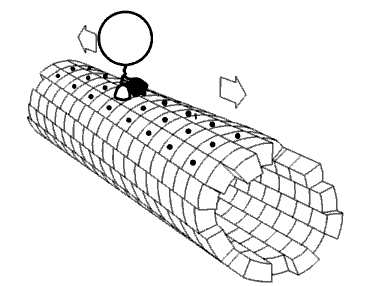
Photo from academic.microsoft.com
Apolipoprotein A-I is the major protein component of high-density lipoproteins and fulfils important functions in lipid metabolism. Its structure consists of a chain of tandem domains of amphipathic helices. Using… Click to show full abstract
Apolipoprotein A-I is the major protein component of high-density lipoproteins and fulfils important functions in lipid metabolism. Its structure consists of a chain of tandem domains of amphipathic helices. Using this protein as a template membrane scaffolding protein, class A amphipathic helical peptides were designed to support the amphipathic helix theory and later as therapeutic tools in biomedicine. Here, we investigated the lipid interactions of two apolipoprotein-A-I-derived class A amphipathic peptides, 14A (Ac-DYLKA FYDKL KEAF-NH2) and 18A (Ac-DWLKA FYDKV AEKLK EAF- NH2), including the disc-like supramolecular structures they form with phospholipids. Thus, the topologies of 14A and 18A in phospholipid bilayers have been determined by oriented solid-state NMR spectroscopy. Whereas at a peptide-to-lipid ratio of 2 mol% the peptides align parallel to the bilayer surface, at 7.5 mol% disc-like structures are formed that spontaneously orient in the magnetic field of the NMR spectrometer. From a comprehensive data set of four 15N- or 2H-labeled positions of 14A, a tilt angle, which deviates from perfectly in-planar by 14°, and a model for the peptidic rim structure have been obtained. The tilt and helical pitch angles are well suited to cover the hydrophobic chain region of the bilayer when two peptide helices form a head-to-tail dimer. Thus, the detailed topology found in this work agrees with the peptides forming the rim of nanodiscs in a double belt arrangement.
Journal Title: Biophysical journal
Year Published: 2018
Link to full text (if available)
Share on Social Media: Sign Up to like & get
recommendations!